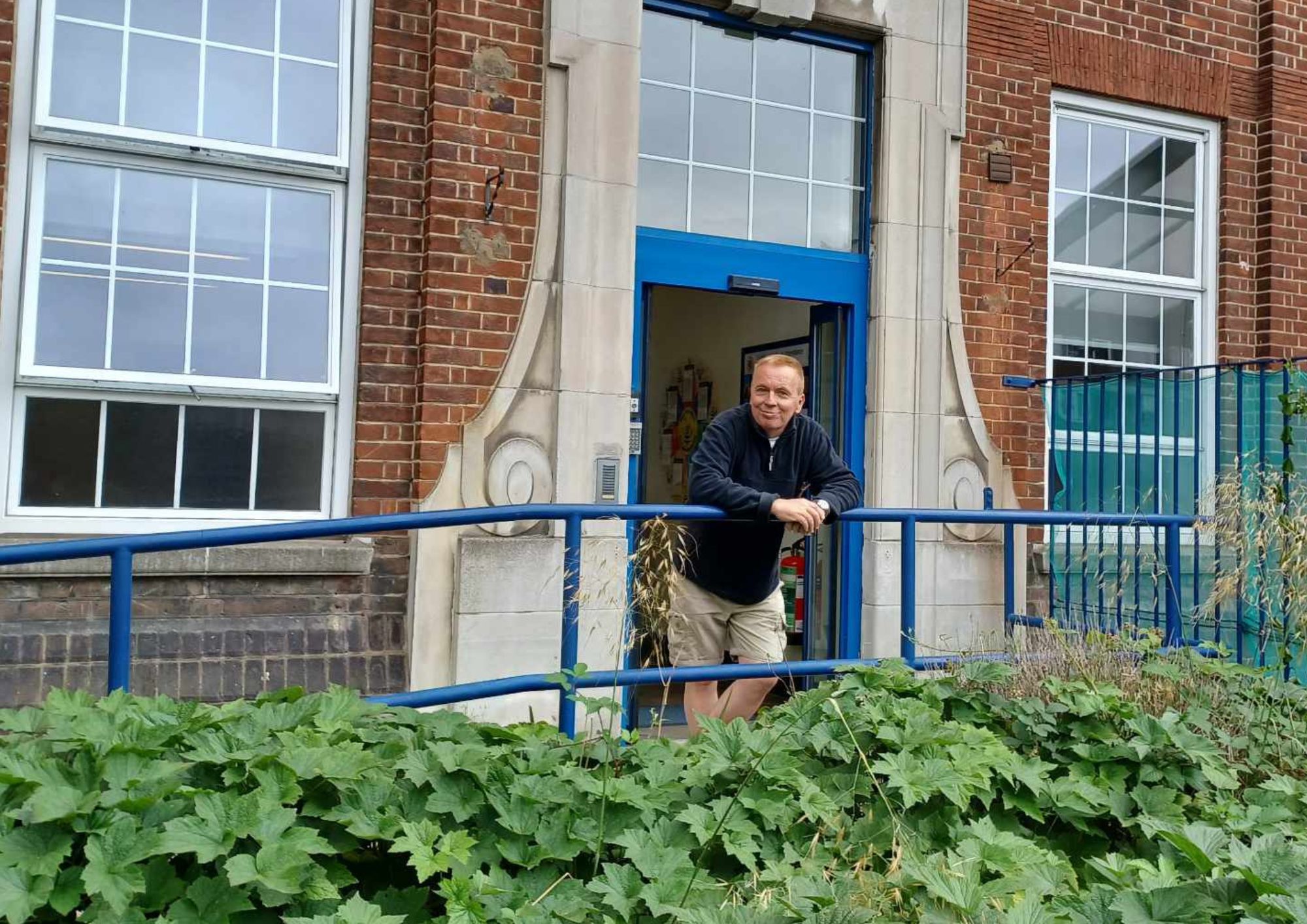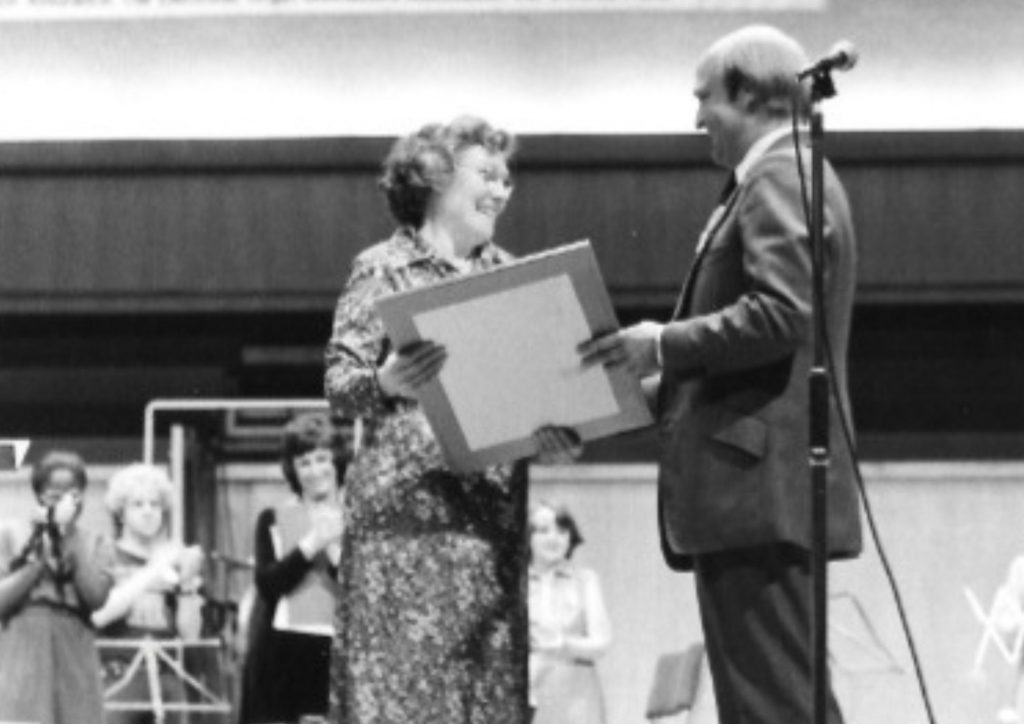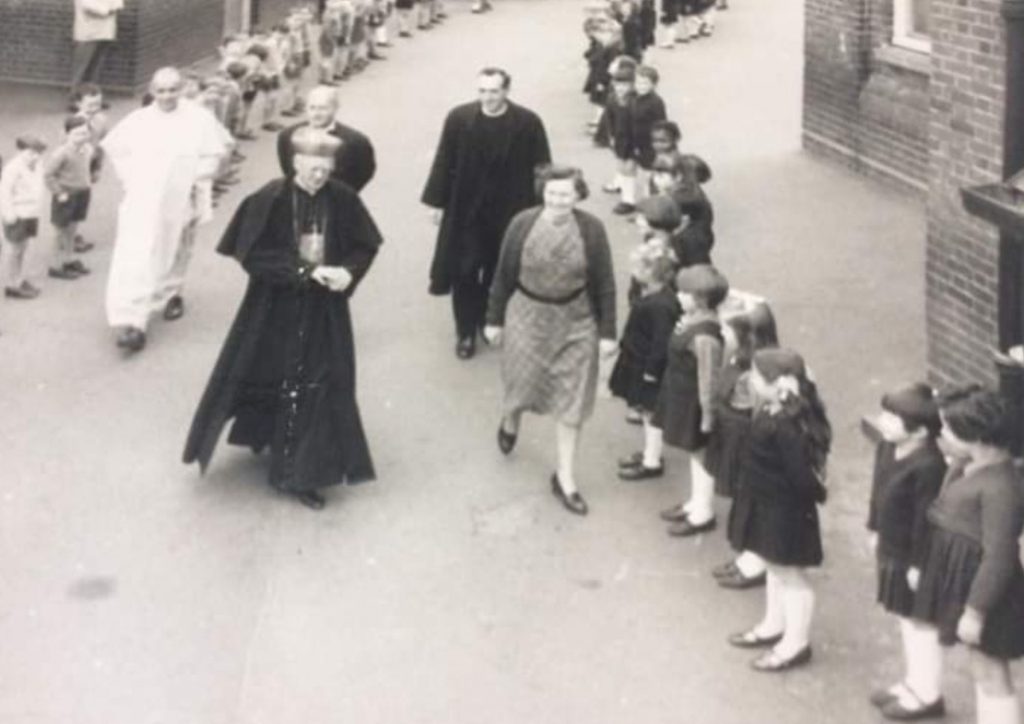St Dominic's: Final day for primary school after 154 years
Memories of a school that served a community
Tuesday, 25th July 2023 — By Anna Lamche

Tone Schofield takes one last look around before the school in Southampton Road closed
THE “end of an era” has arrived as the gates of a school through which thousands of children have passed for more than 150 years close for the last time on Thursday.
Staff at St Dominic’s Catholic Primary School in Gospel Oak will bid a final farewell to their students this lunchtime after pupil shortages forced the school to close.
In a borough where 55 per cent of secondary school-age children go to private school or somewhere outside of Camden, falling demand for pupil places has led to the closure of four long-established primaries in recent years.
The Jewish Chronicle reported last month that the Hasmonean High School for Boys, based in Hendon, “is ‘poised to sign a contract’ with the Catholic Diocese of Westminster to lease a primary school near Belsize Park underground station.”
On its final day, there are just 22 Year 6 students left at St Dominic’s School, along with three children in the nursery, according to school governor Margaret Harvey.
Many others left once they heard the school was due to close rather than see out the academic year.
Ms Harvey told the New Journal: “I think the school’s done very well over its 160 years of educating children in that area. It’s just so, so sad there are not enough children. Camden’s suffering quite badly in terms of pupil numbers.”

She added: “I think standalone primaries are probably finding it a bit of a struggle. When a headteacher is retiring, there is a feeling that you need to consider forming a relationship [with another school], and then of course you can share the cost of that head[teacher].
“It’s the end of an era, and it would be really unfortunate if more schools close. Let’s hope that that’s the last school.”
The closure of St Dominic’s marks the end of a 154-year journey, dating back to the founding of the school by a Dominican priest in the fields of Haverstock Hill in 1869.
The school was “built in times of difficulty,” according to school documents written in 1932, when Catholic parents were forced to pay for “the privilege of having their children taught by Catholic teachers in Catholic surroundings” without help from the state.
The school has existed on the same site in various guises since it was founded more than 100 years ago, with the current building erected in 1932.
In this time it survived two world wars, as well as numerous financial crashes and, most recently, the Covid pandemic.
Tone Schofield, who started in 1965, said he “witnessed the complete redevelopment of much of the area” while he attended the school. He recalls “walking to school in what seemed like the world’s biggest building site.”
Meanwhile, there are fewer practising Catholics living in the area today than in previous years.
Lisa Adda, who started at the school in 1992, said: “It was more family-oriented. Everyone went and got married in St Dominic’s, they got baptised in the church next door, and they all went to that school.
Everyone had communion in that church as well. It connected everyone together.”

Cathy Cunningham-Elliott during his school days and, below, a picture of her this week

For Cathy Cunningham-Elliott, who started at the school in 1969, the influence of music teacher and headmistress Maureen Brass had the biggest impact on her life.
“She really was ahead of her time. Like a lot of people in our area, we didn’t have lots of money, we were large families because we were predominantly Catholic Irish families… things were difficult financially, and she would spot in the pupils a flair – a certain something – and nurture it,” she said.
Ms Brass encouraged generations of children to learn instruments, and would open up the school during the holidays to give children without a piano at home the chance to practise.
“She really was a legend as far as I’m concerned,” said Ms Cunningham-Elliott.

Maureen Brass
Stephanie Duff, whose daughter recently left the school, added: “The staff that taught me and served me my lunch are still there today and taught my daughters as well. The TA that wiped my grazed knees wiped my daughter’s knees also.
“It broke my heart to have to move my daughters out of the school but we were forced to.”
A Walk Through Time
TO mark the closure of St Dominic’s this week, the New Journal visited the Local History Archives in Holborn to explore the school’s past.
One booklet, printed in 1982 to commemorate the “golden anniversary” of the new school building, features the memories of pupils who attended the school at the time the new building opened in 1932.
Sheila Clyne-Wilson, who began at the school in 1927, recalled how a new building for the school had cost £26,000. “How could we imagine so much money when in most families the father was the only breadwinner and the average income around £2 per week?” she wrote.
When the improved building opened, she added, “many pupils fainted, which caused anxiety as to the reason, and eventually it was decided this was due to experiencing a centrally heated atmosphere for the first time.”

She left the school in 1934, which Ms Clyne-Wilson described as “the worst year of the depression when … our old exercise books were returned to us instead of new ones so that we could use up the empty margins we used to leave for the teachers’ marking.”
In the golden anniversary booklet, Ms Clyne-Wilson added at time that she hoped there would be another magazine written in 2032 to remind people of what St Dominic’s had been like in the 1980s.
That will now not be possible.
Another contributor to the booklet was the current Archbishop of Liverpool, Malcolm McMahon, who joined in 1954 and recalled being made a prefect as an older boy.
“Some of the jobs were quite gruesome. I remember one boy… was appointed ‘sick monitor’,” he wrote – a task which meant cleaning up any vomit.
Another prefect would be “first aid monitor”, using the same piece of cotton wool to “bathe the scratches and grazes sustained in the playground”.
The Archbishop wrote: “By the end of the lunch break the piece of cotton wool was probably the main source of infection.”

